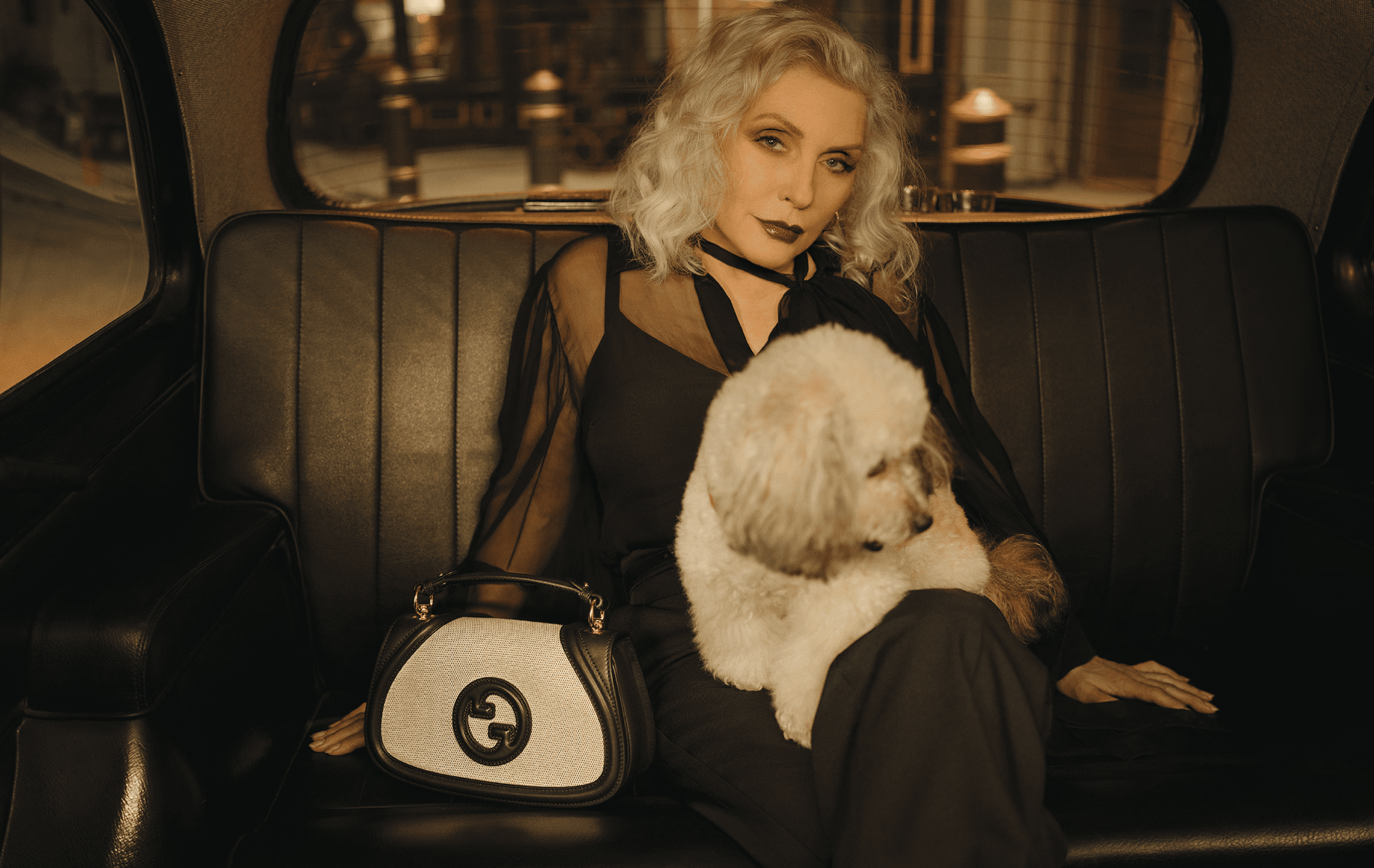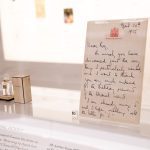Over a hundred years since its humble beginnings in Florence, Gucci is still shaping the idea of Italian luxury. The centennial reminded the world of its Florentine roots, while Hollywood turned the family saga into popular culture with House of Gucci in 2021. The label has mirrored the cultural mood through decades of reinvention, guided by figures from Dawn Mello to Tom Ford and Alessandro Michele. Now Demna is preparing to shape a sharper, post-ironic chapter. To understand where it might go next, seven pieces tell the story best.
Beginnings in Florence
In 1921 Guccio Gucci founded his workshop in Florence, inspired by the luggage of aristocrats he had observed while working as a porter at London’s Savoy Hotel. His early designs combined Italian craftsmanship with equestrian codes: saddle girths, horsebits, robust leather. These motifs are still part of the House’s heritage today. By the 1930s, trade embargoes forced him to experiment with hemp, giving rise to the first patterned canvas bags. Expansion soon followed in Rome, London, Palm Beach, Paris and Tokyo. Gucci became shorthand for Italian luxury.
A family empire in crisis
The business remained under family control until the late 1980s, when disputes and financial mismanagement brought it close to collapse. At this point Dawn Mello, former fashion director of Bergdorf Goodman, was appointed to re-energise the House. She reintroduced archival details such as bamboo handles and horsebit hardware.

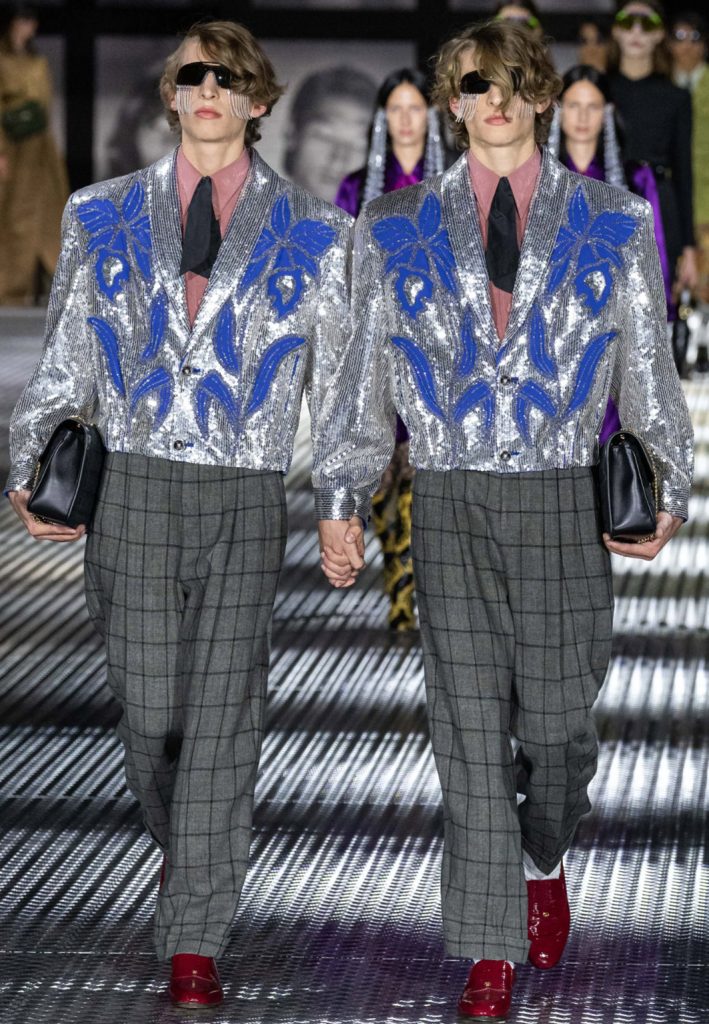
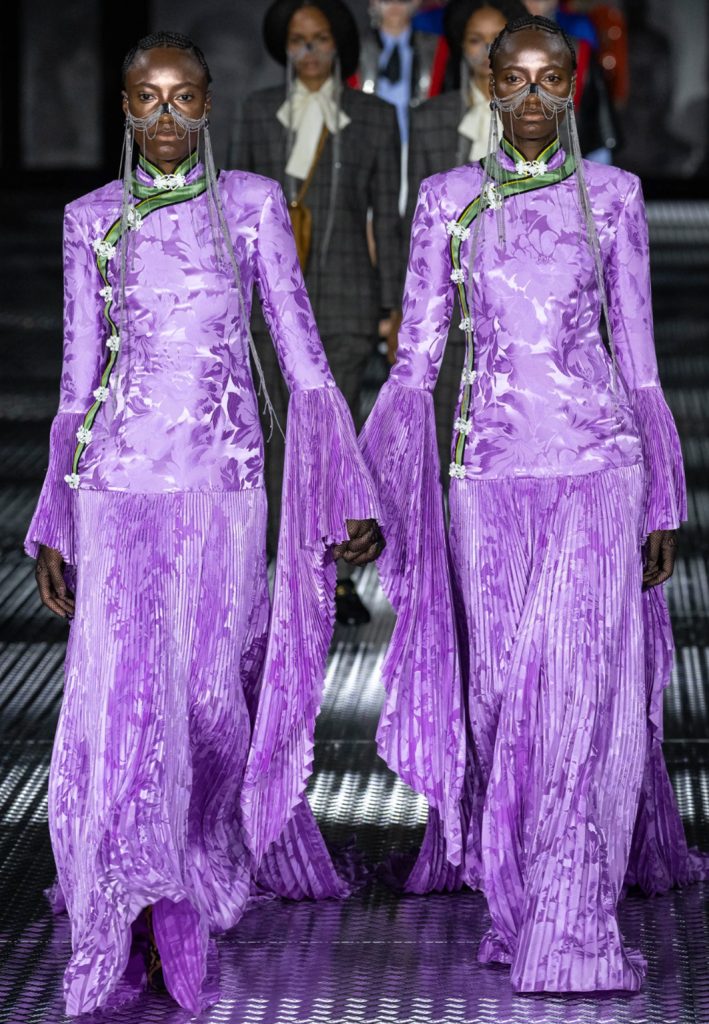
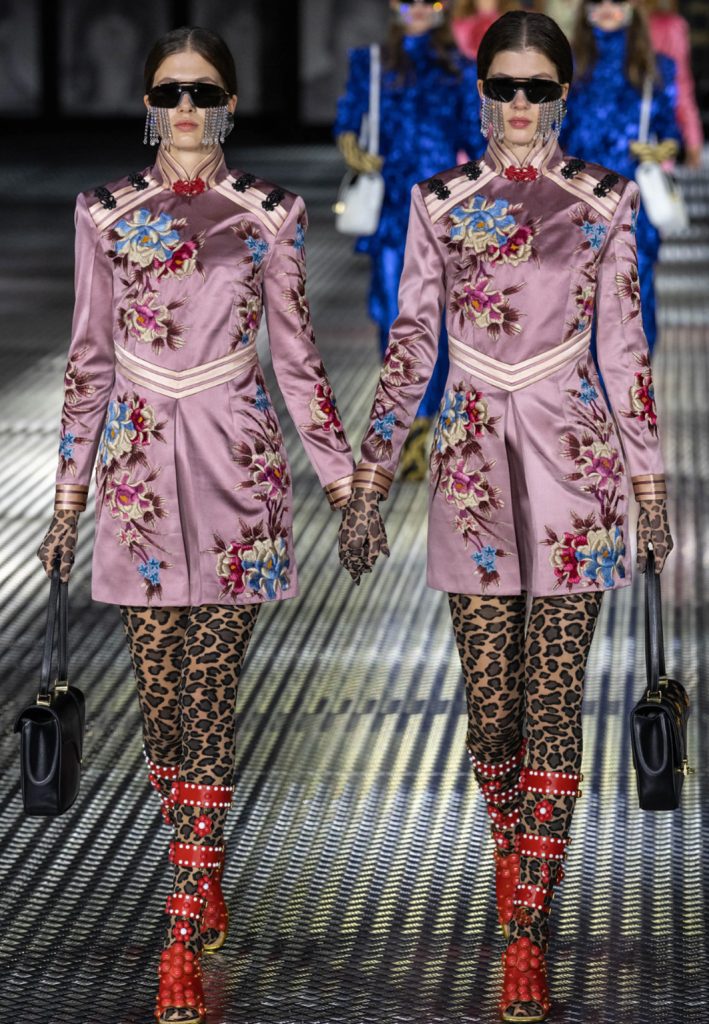
Allessandro Michele for Gucci , SS23, photography Filippo Fior for Gorunway
Ford, Giannini, Michele
In 1994 Tom Ford took the reins. With sharp tailoring, plunging necklines and unapologetic glamour, he turned Gucci into the label of the decade. His white jersey dress with a gold buckle, shown on Carolyn Murphy during the AW1996 catwalk, distilled the new mood: minimal cut, maximal impact. By the early 2000s Gucci was the hottest ticket in Milan. This transitional period is beautifully captured in Kingdom of Dreams, the documentary series charting fashion’s high-stakes battles of the 1990s. Frida Giannini succeeded in 2006 with an emphasis on heritage revival. She reissued the Jackie bag of 1961, re-centred the horsebit loafer, and mined the archives for print and pattern. If Ford was about sex appeal, Giannini was about continuity and flow. Then in 2015 came Alessandro Michele, and Gucci turned ultramaximalist with an eclectic bohemian attitude. Brocade suits, geek-chic glasses, embroidered sneakers, gender-fluid silhouettes. An exuberant collision of references that defined fashion’s new eclecticism. His tenure also delivered spectacle: one of the most haunting was the twin-cast show of 2023, a collection that is a personal favourite. In the same year Michele departed to lead Valentino.
Transitions again
In 2023 Sabato De Sarno presented a far more streamlined Gucci. His minimalist view on the label was successful, yet a complete contrast to Michele’s exuberance, aimed at a very different audience. In 2025 came the special announcement that Demna would take over. From Ford’s hedonism to Michele’s overload, the House has thrived on reinvention. With Demna, irony and cultural commentary are likely to become its sharpest tools to come. Very excited!
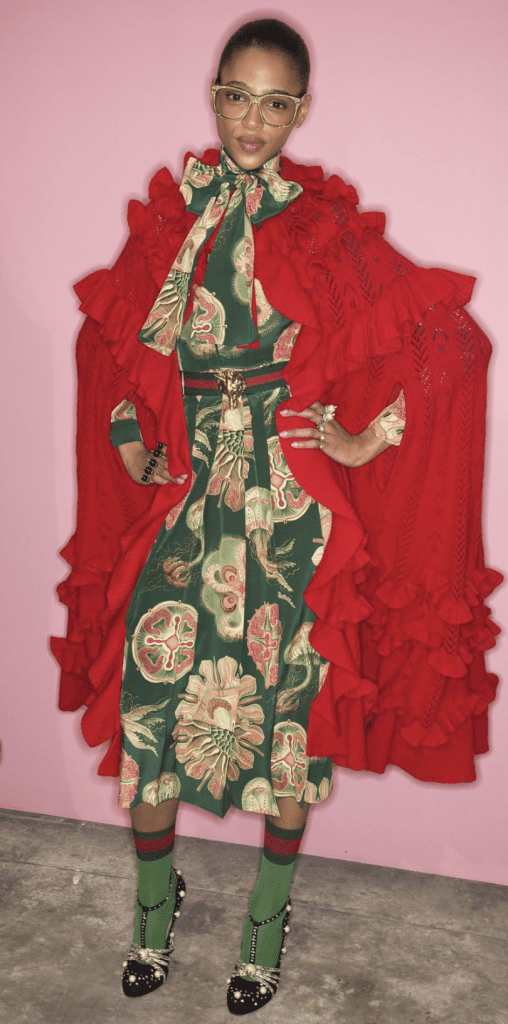
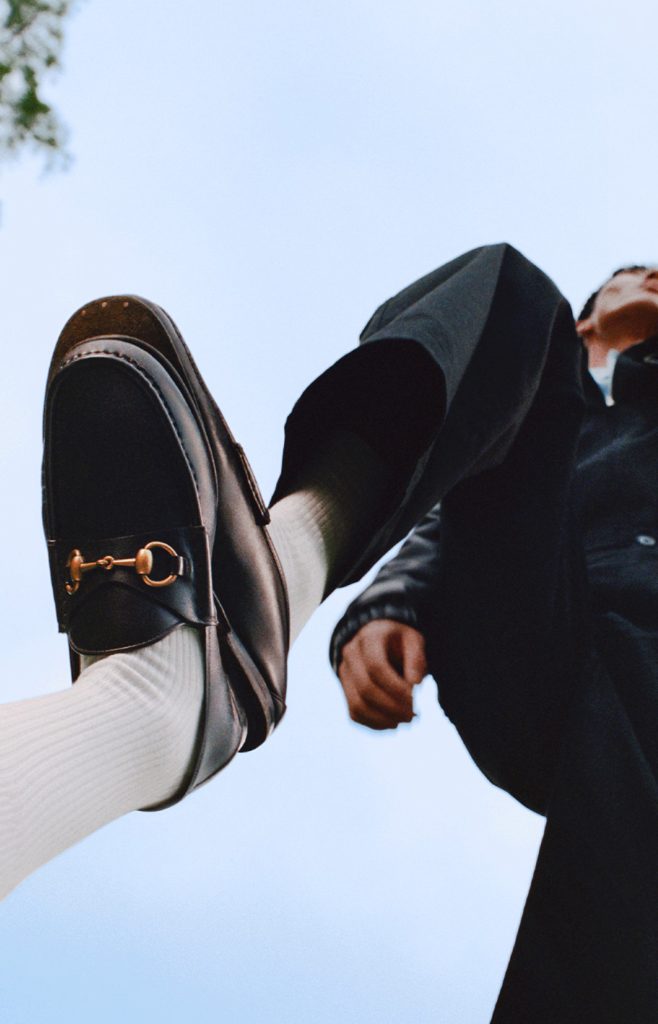
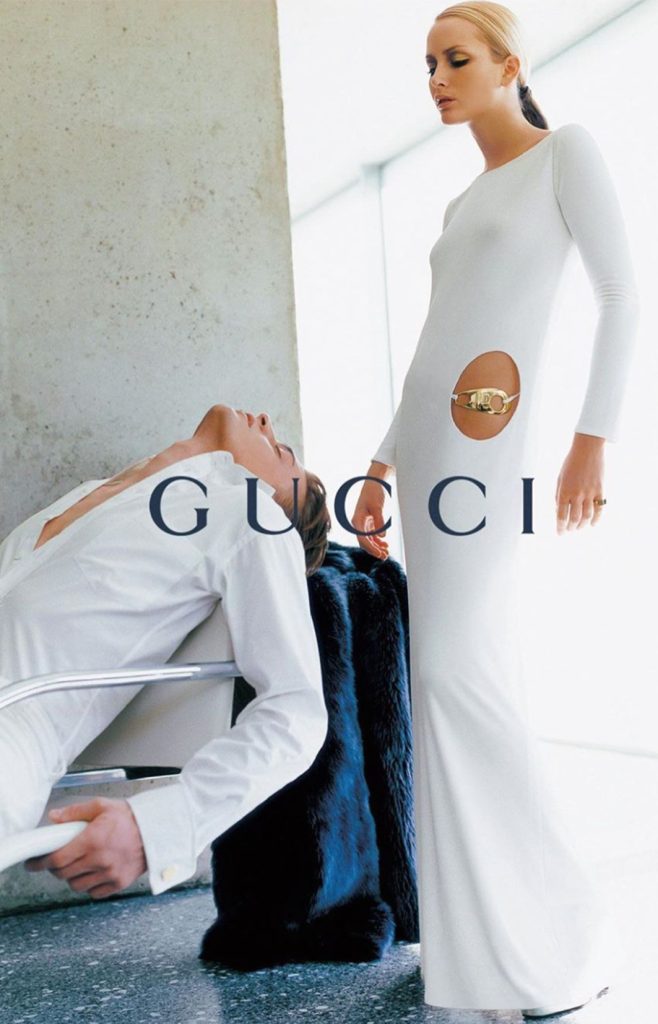

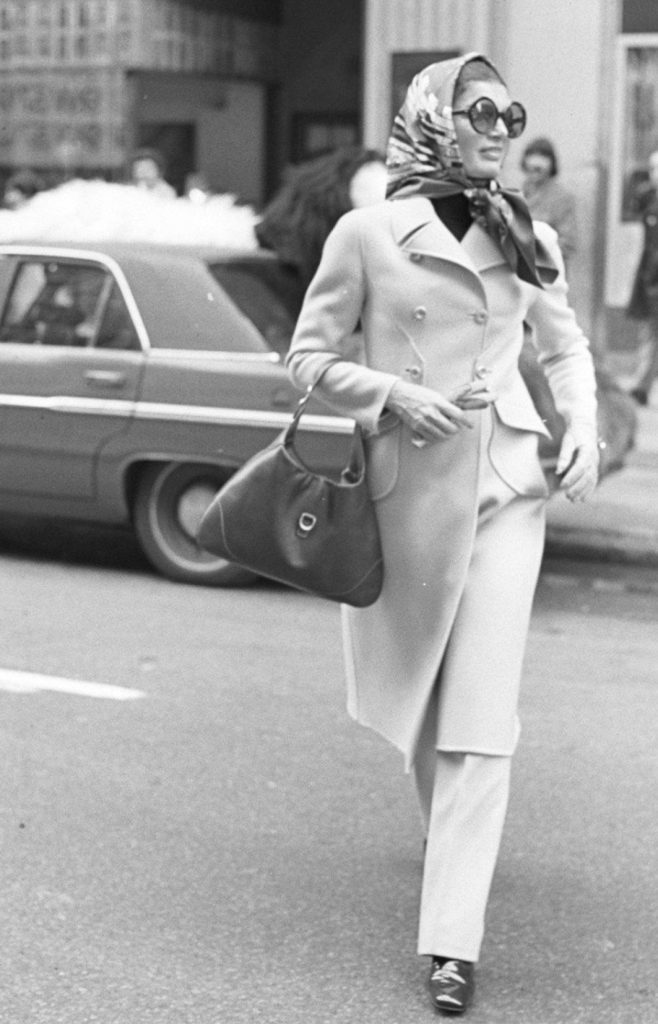
Backstage SS2016, Gucci campaign SS25, AW1996 advertisement, Jackie Kennedy with Jackie Bag (Fairchild Archive / Penske Media) and Gucci Bamboo. All other images courtesy of Gucci
The Seven
The Green and Red Stripe
Derived from saddle girths, the racing stripe has become one of fashion’s most recognisable signatures. It speaks of equestrian roots and was swiftly reimagined for handbags, belts and tracksuits.
Horsebit Loafers (1953)
When Gucci applied its equestrian hardware to a simple moccasin, it created an instant classic. Worn by JFK and Jane Birkin, the loafer embodied Italian ease with an American preppy twist.
The Flora Scarf (1966)
Commissioned for Princess Grace of Monaco, the scarf bloomed with ninety-plus flowers. Its joyful print has been reissued countless times, a perennial Gucci emblem.
Tom Ford’s White Dress (1996)
Minimalist in cut but high-voltage in effect. The white jersey dress with gold buckle, modelled by Carolyn Murphy on the AW1996 runway, became the defining image of Ford’s sex-chic Gucci.
The Arm-Candy Icons
Gucci’s handbags chart its evolution. The Bamboo Bag (1947), born from post-war shortages with its heat-shaped handle, became the ultimate icon. The Jackie (1961), renamed after former American first lady Jackie Kennedy was photographed with it. The Horsebit 1955, sleek and structured. Michele’s Dionysus and the quilted Marmont turned into new icons for a global Instagram era. And now the Giglio Tote carries the story forward.IMAGES
The GG Monogram
Guccio’s initials, first applied to canvas in the 1930s, became a symbol of logomania decades before the word existed. From luggage to sneakers, it is Gucci’s universal shorthand.
The Balenciaga Hack (2021)
A once-in-a-generation moment: two Kering labels colliding in a logo mash-up. Handbags, jackets and sneakers bore both names. A marketing coup, and perhaps a prelude to the Demna era.
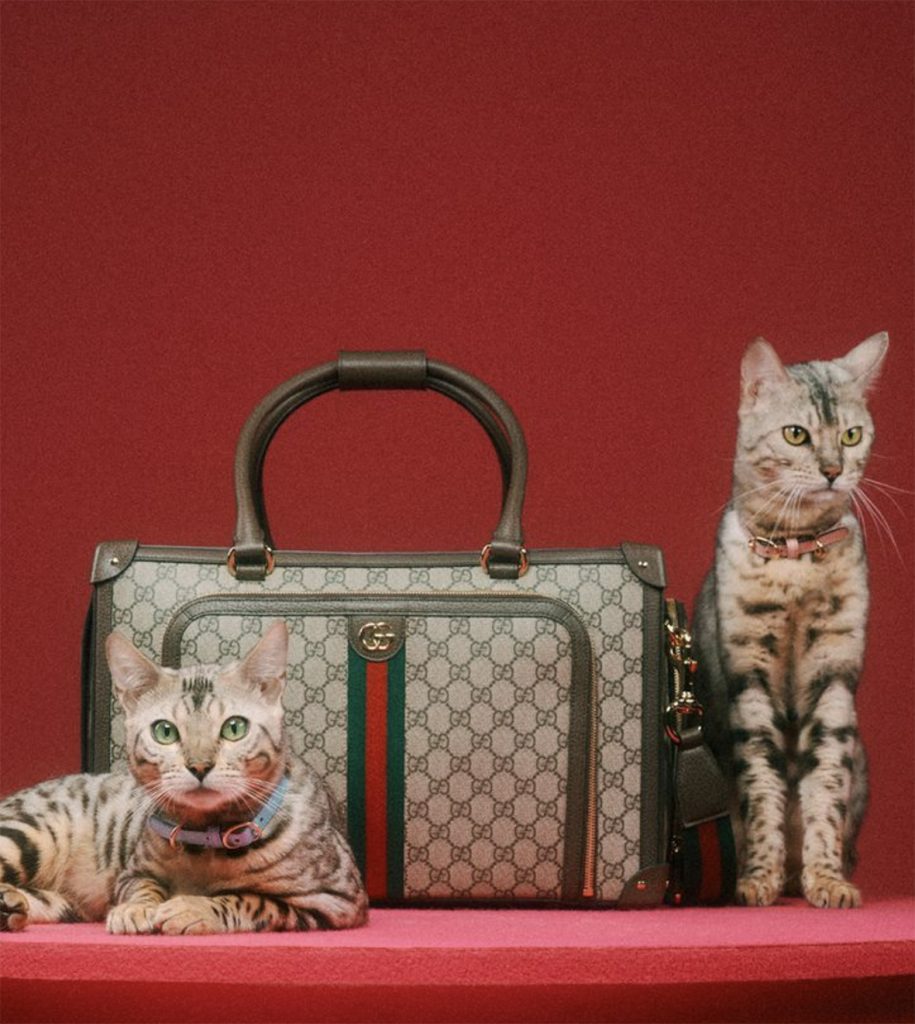
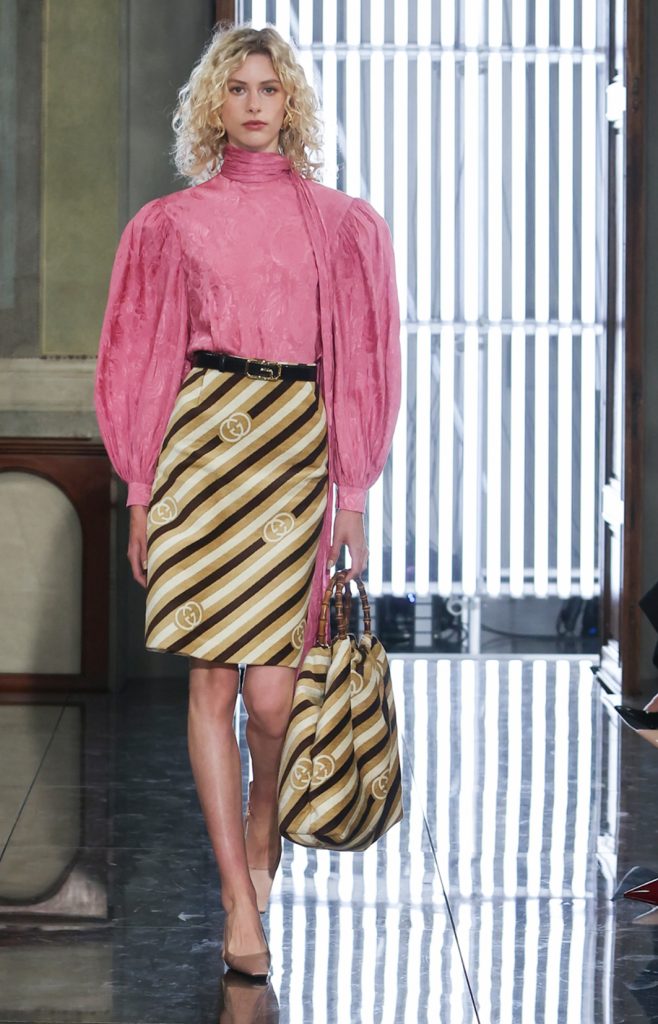

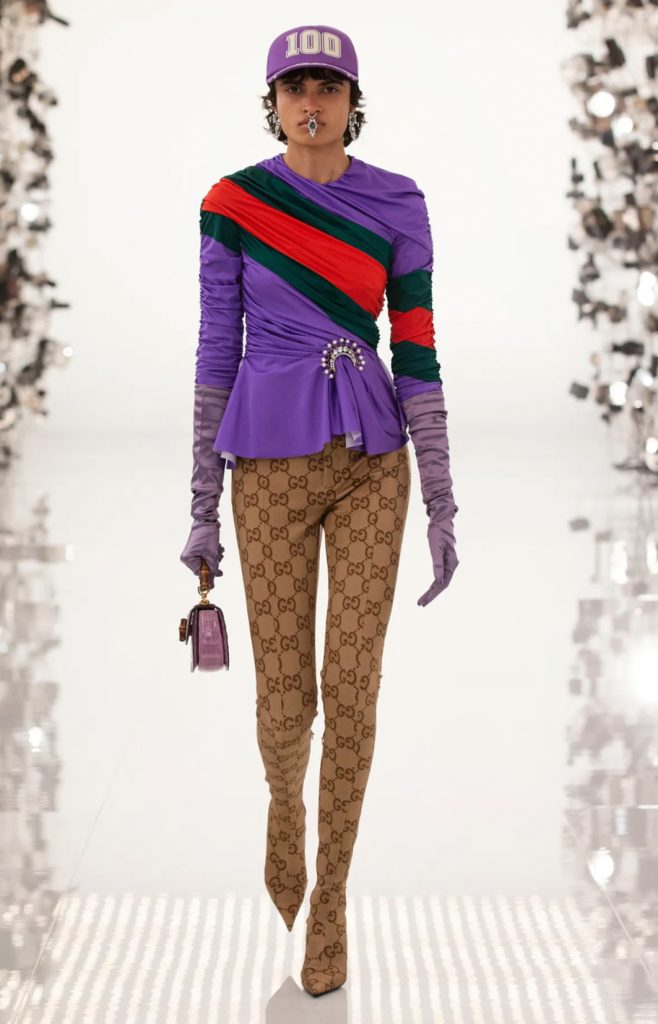
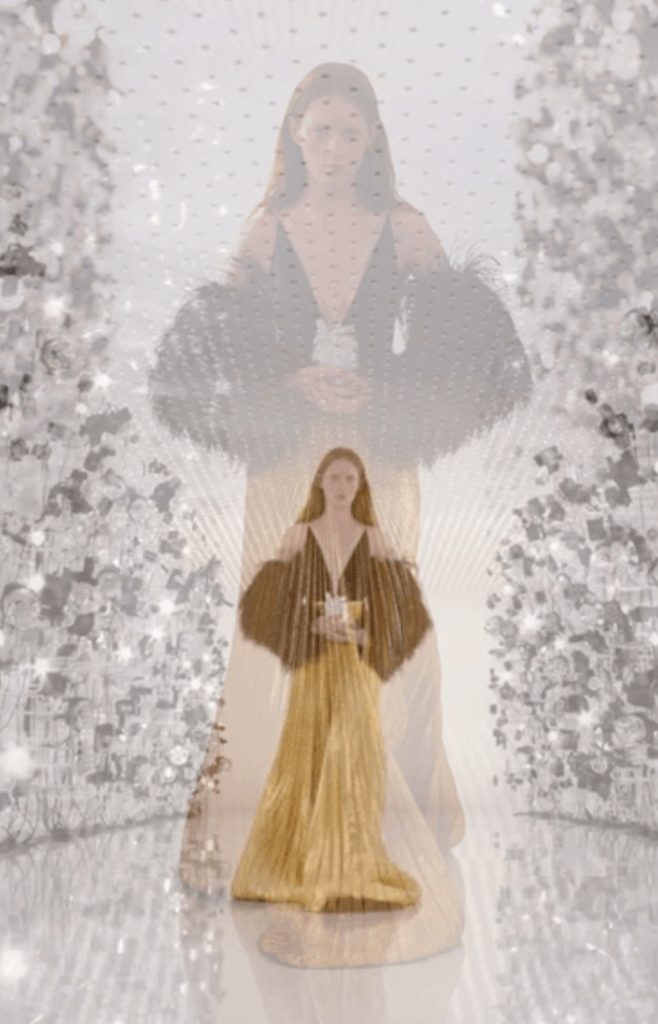
Gucci Bamboo ad, Gucci ad, Gucci logo featured in resort 2026 collection, Gucci x Balenciaga, SS21, all courtesy of Gucci
Images courtesy of Gucci, with exceptions credited individually.
Discover mode: www.gucci.com
